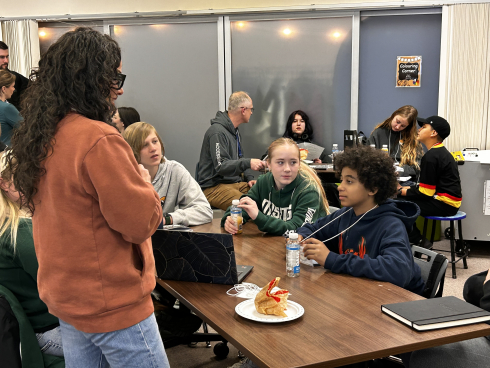
November 20 is National Child Day!
November 20 marks National Child Day. It’s an opportunity for educators, parents and caregivers to teach children about their rights.
National Child Day is about celebrating children as:
• active participants in their own lives and in their communities.
• active citizens who can and should meaningfully contribute to decisions that affect their lives.
Children’s Rights
Children’s rights are written in a document called the United Nations Convention on the Rights of the Child (UNCRC). The UNCRC is a human rights treaty created by the United Nations that provides a full list of rights for all children up to the age of 18. Almost every country in the world has signed the Convention. Signing the Convention means these countries promise to protect and promote these rights. Canada signed the convention in 1991.
The United Nations Convention on the Rights of the Child: An overview for children and teenagers
UN-Convention-on-Rights-Poster in Child-Friendly Language
Basic Principles
• Non-discrimination: The rights of all children are to be respected without discrimination of any kind. It does not matter their gender; if they are rich or poor; what their religion, ethnicity, or language is; or whether they have special needs.
• The best interests of the child: When decisions are made that affect the lives of children, the Convention says that it is very important to think about what is best for the child.
• The right to life and development: The Convention says that governments should do their best to help children live and grow to be the best they can be.
• Participation: Children have the right to give their opinions in all matters that affect them and to have their voices heard. Children's views should always be taken seriously, no matter their age.
These basic principles align with the district’s strategic priorities of student success, accountability, human flourishing and Truth and Reconciliation.
Participation in Committees
In the Chilliwack School District, we create opportunities for student participation. Student representatives sit on committees including Accessibility Advisory Committee, Budget Advisory Committee, and IDEA Committee. In these roles, students share their opinions and advise staff and the Board of Education about decisions that impact their schools.
Participation in Student Voice and Agency
Middle School Student Voice and Agency, Secondary School Student Voice and Agency, and Indigenous Student Voice and Agency groups include students from middle and secondary schools across the district. These groups meet regularly to lead impactful work for their school communities and to share their opinions with the Board of Education and other leaders in the school district. Last year they championed accessibility and anti-racism. They also worked alongside district staff to provide input into the 2025-2029 Strategic Plan.
For resources and activities that educators, parents, and caregivers can use to help children and youth understand their rights on National Child Day, visit Canada.ca.
